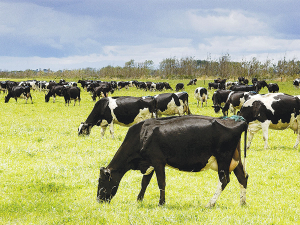Two key changes will be made: the first will help New Zealand Animal Evaluation Limited (NZAEL) identify what proportion of a Holstein Friesian animal is made up of Holstein or Friesian. The second change is said to better reflects today’s milking lengths by allowing herd testing data collected up to 305 days of milk to now be included in the animal evaluation.
These changes are part of NZAEL’s commitment that data captured in the DIGAD (Dairy industry good animal database), informing its animal evaluation, is accurate and provides meaningful insights for farmers.
“Quality data going into the DIGAD is really important. Farmers need to have confidence that the data that they use to make their breeding and culling decisions is the best it can be. Our team compares every AE run to those before it and identify areas for improvement,” says Andrew Fear, manager of NZAEL.
That’s how the change to breed proportion for Holstein and Friesian has been implemented. From December, NZAEL will now be able to identify the proportion of Holstein and Friesian in an individual Holstein Friesian animal for the purpose of animal evaluation.
There are a number of differences between Holsteins and Friesian animals and so it is important to understand the breed proportion in any individual Holstein Friesian animal as part of the Animal Evaluation process.
“The new formula is expected to be more accurate as it recognises variations between animals and is set based on individual herds. Farmers can expect more stability and accuracy in their herd,” says Fear.
The update to days-in-milk to include all data collected up to 305 days of lactation is a change that better reflects today’s milking practices. Many herds have extended the length of their lactation beyond 270 days and were missing that data being included. Andrew says that it was time to make the change to better reflect this for farmers.
“The cut-off of 270 days was historical and we knew this wasn’t an accurate reflection of today’s milking days. From December, any animal who is herd tested up to 305 days of lactation, that data will now count towards its evaluation.
“Farmers who have been herd testing beyond 270 days have been missing out on the inclusion of that valuable herd testing data attributing to their animals because of the cut off. Allowing this extra data means we will have more accurate Breeding Worth.”
The changes are small, but with more accurate data available on their own herd, farmers can feel more confident when making breeding decisions for the next.
Fear encourages farmers to use the tools available to them from NZAEL including the Bull Search and Bull Team Builder as well as working closely with their AB provider.
















